
Coneflowers, or echinacea as they're also known, are a familiar sight with their large, plum purple and dusky pink daisy-like flowers blooming from July to October. They are the stars of the show in any prairie-style planting scheme and wild flower meadows, especially as they're natives of North America. Their natural glamour and nectar-rich flowers are a welcome addition to herbaceous borders.
The petals burst open in spectacular stars then droop downwards into a shuttlecock shape as summer stretches on. These vivid flowers will see you right through the summer season and up to the first touch of frost. Even then the sculptural seed heads will add pleasing shapes to your flowerbed ideas. No wonder they are among the best perennials out there.
Plant breeders have been hard at work, delivering a wider range of newer colors including shades of lime green, tangerine, apricot and mango. There are now tufty-looking double blooms and compact cultivars such as pink ‘Kim’s Knee High’ that work well in smaller spaces and containers. There are also marbled ones like ‘Art’s Pride’ that mix pink and orange in a flamboyant color show. There are so many coneflower varieties, you'll be spoiled for choice when it comes to understanding how to grow coneflower.
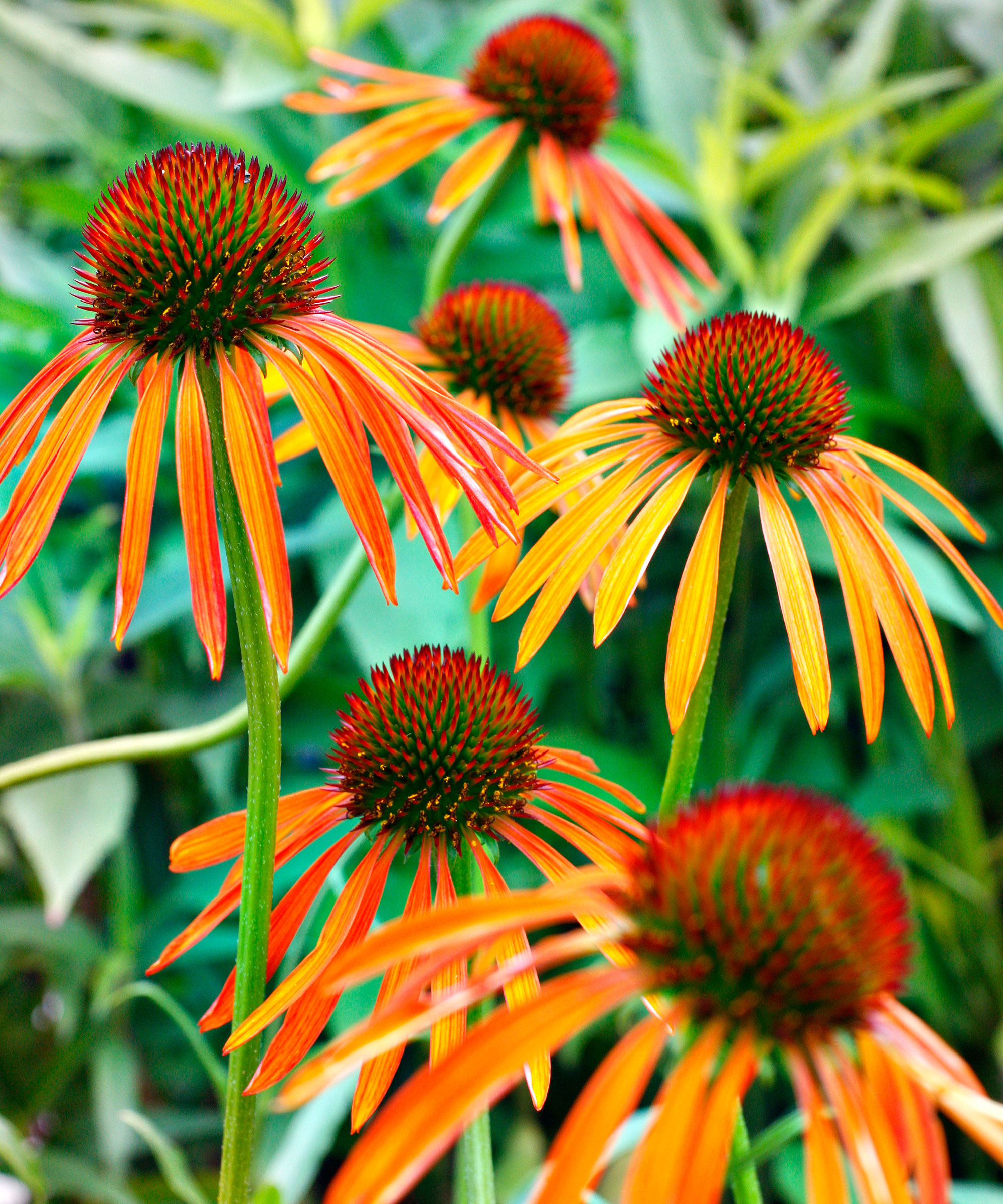
Growing habits of coneflowers
Echinacea is a hardy perennial that survives very cold winters. Plants become dormant in winter and re-emerge in spring, when you should cut them back for best results in the summer.
Coneflower plants need time to put down roots before their first winter. Plant in spring or up to early fall (September) as long as plants are watered during any dry spells.
Pre-soak your potted plant so it's well hydrated before it goes in the ground. Dig a hole twice as wide as the pot that the plant comes in and the same depth. Remove the plant from the pot and place it in the hole. Firm in gently all around with soil, then water in well.
Water coneflowers well from May to September, and keep an eye on them if it gets particularly hot as they won’t thrive if the soil dries out.
Mulching established plants over moist soil in late spring or early summer is a good way to keep your plants healthy.
It's worth knowing that even quite small plants will overwinter better in their pots than planted out in late fall or winter.
Coneflowers do not always flower well in their first year. Plant out in early fall if you want the best chance of a good display the following year. If you plant them in early spring (after the final frost), echinacea will produce leaves in three months but can take up to two years to actually produce blooms.
How to grow coneflower from seed
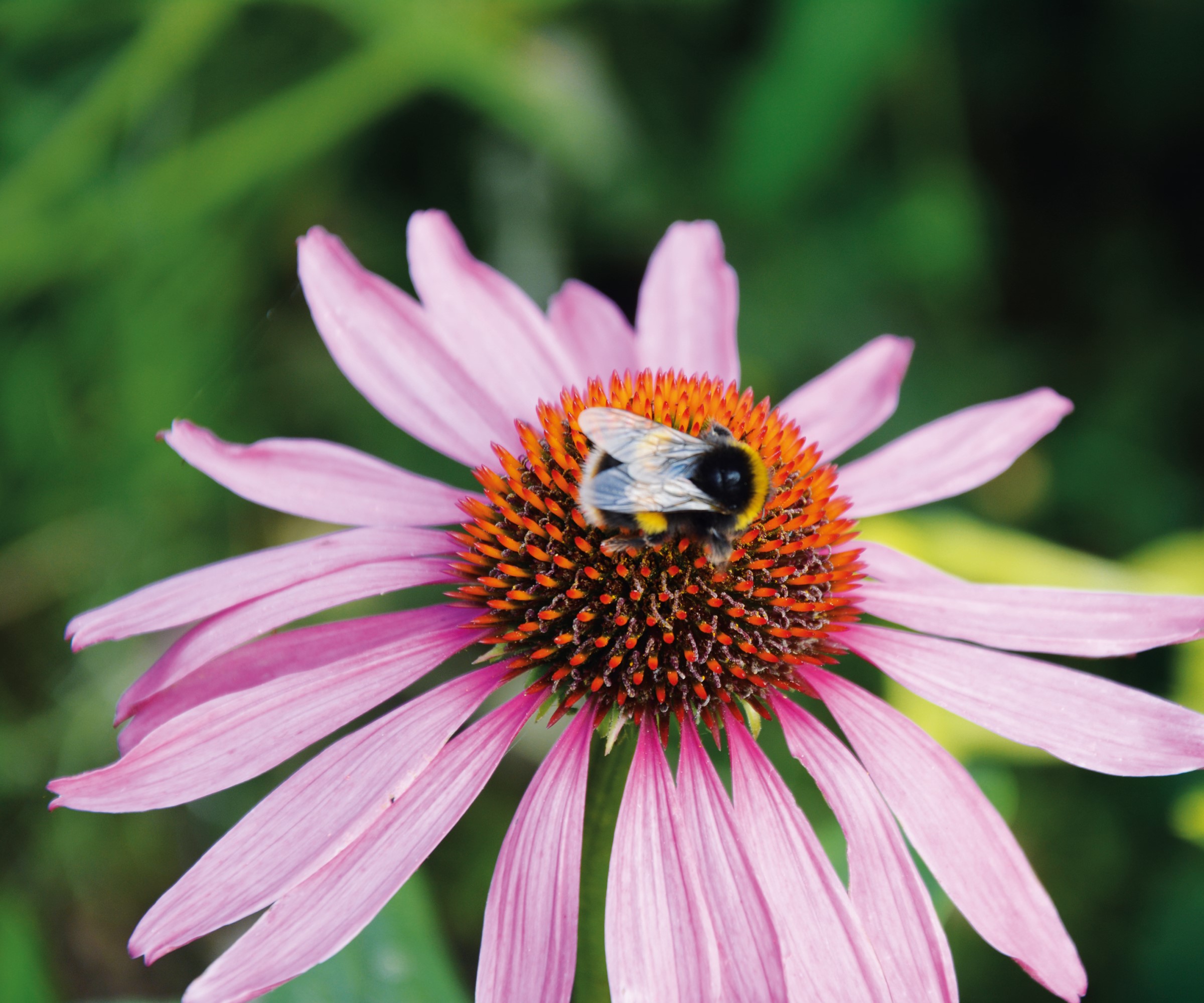
It's easy to learn how to grow coneflower from seed in spring or fall for planting out next year, so this is a great option to go for. They’re inexpensive and readily available from a wide range of suppliers, such as these white Echinacea purpurea seeds available at Walmart. Here's how to do it:
- Fill a wide pot with seed compost almost to the top. Take a small pinch of seeds and sprinkle them thinly and evenly over the top of the compost.
- Add a light sprinkling of compost to cover the seeds.
- Water the seeds carefully and cover the pot with a polythene bag.
- After they have germinated and begun to grow, remove the polythene bag. Seedlings generally appear in about three weeks.
- When large enough to handle, transfer each seedling to a 9cm pot. Keep the seedlings in a cool but light place and protect from frosts. There's tips on how to transplant seedlings in our guide.
- Plant the seedlings out in a sunny spot in the garden once any risk of frost has passed.
Where to plant coneflower
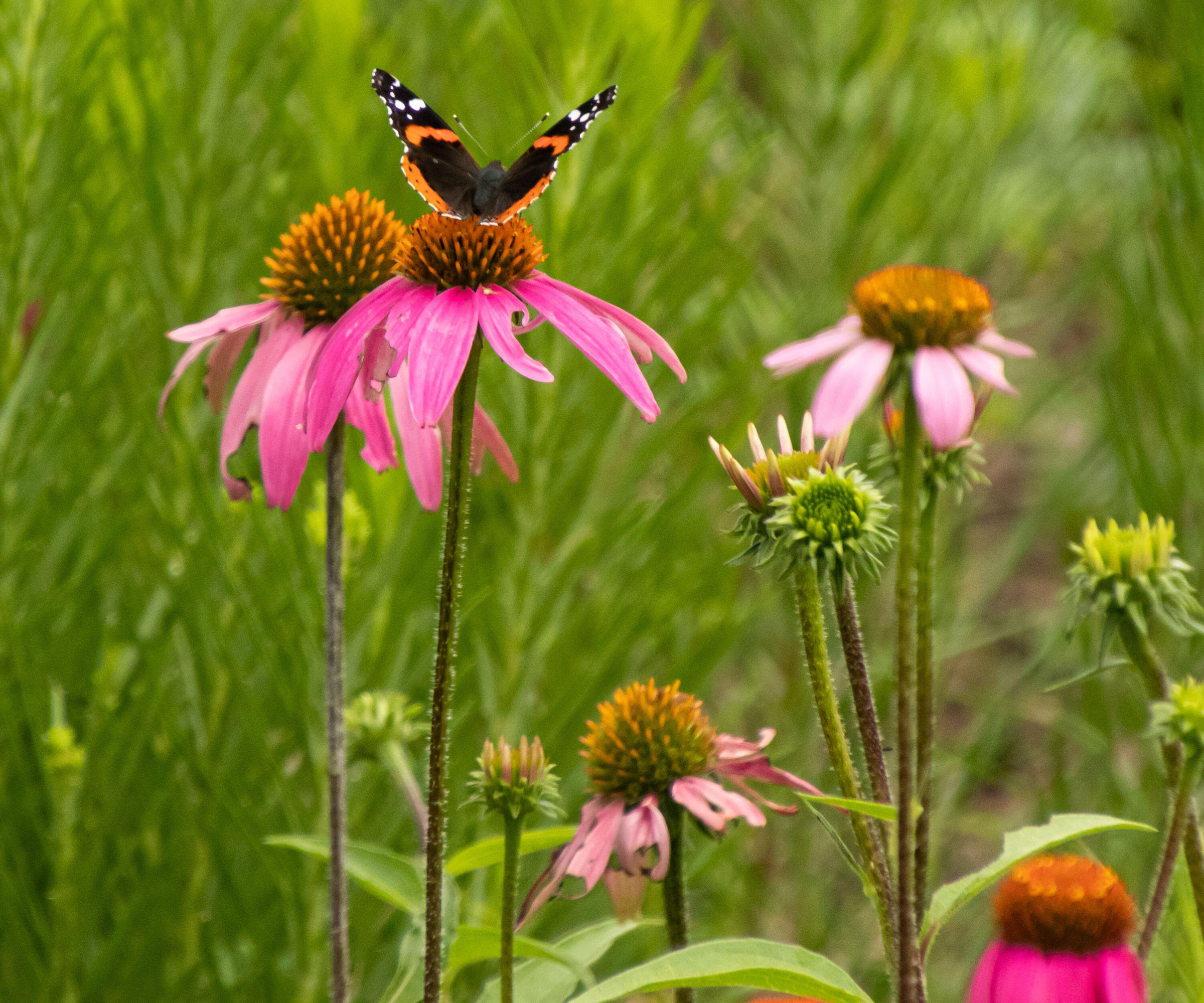
Coneflowers grow best if you put them in a spot where they will get plenty of sunlight. They love warm and sunny conditions and are completely hardy, so can stay out all year round. They will tolerate some shade but it’s not their preferred spot.
They’re pretty easy going and will grow in most kinds of soil types, as long as it's not waterlogged or doesn’t completely dry out. They are fast growers and will self-seed profusely then pop up where you least expect it. And the more fertile the soil, the more they will thrive.
Several echinacea plants look best grouped together in clumps of three or five to make an impact in the middle of a garden border.
Growing coneflower in pots
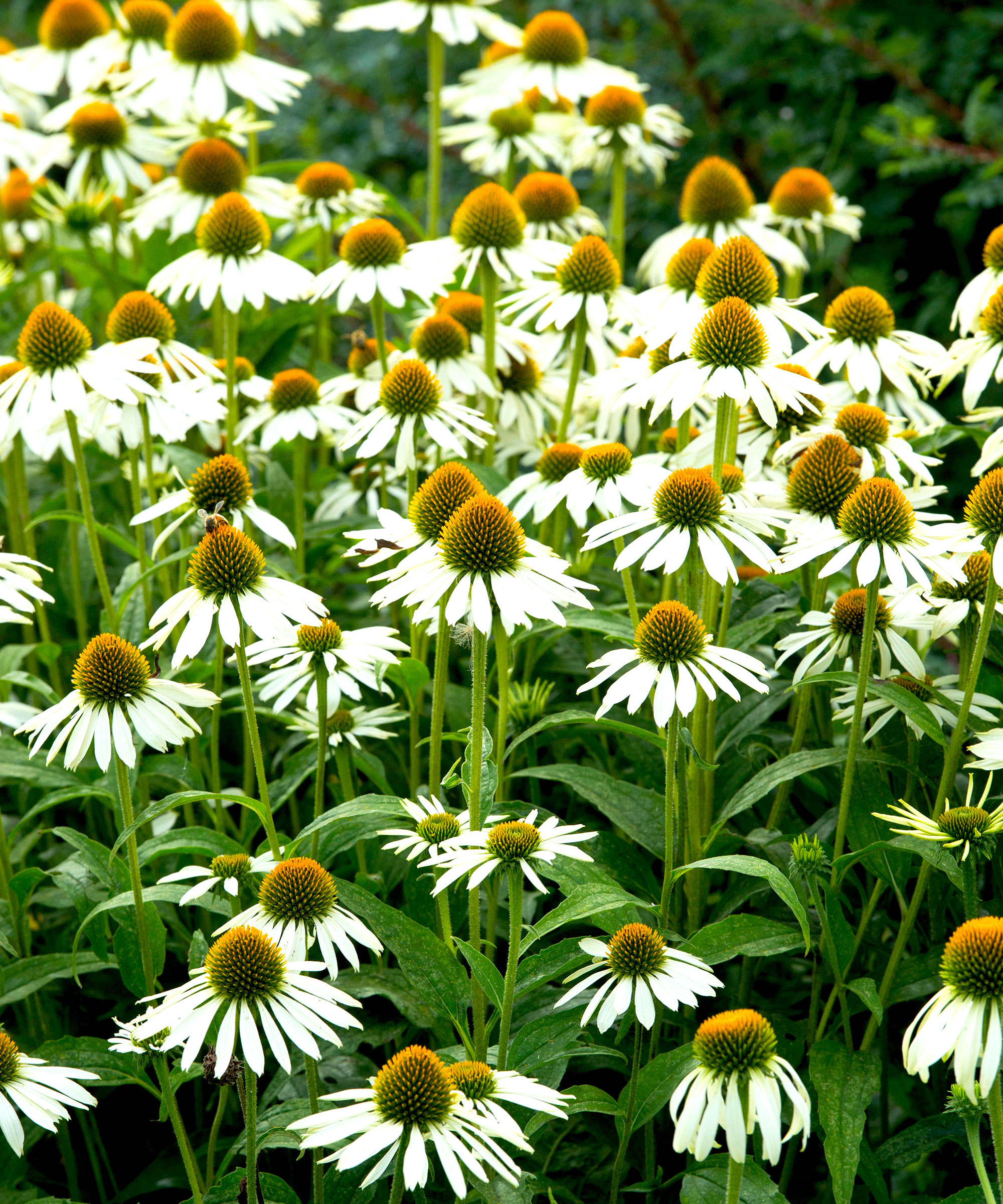
Coneflower do well in pots, provided there’s plenty of room for them to thrive. Choose a deep container and position it where they will get plenty of sunlight.
If you have heavy clay soil that may become waterlogged it’s probably better to grow echinacea as part of your container gardening ideas. Use a multi-purpose potting compost with plenty of added horticultural grit or vermiculite, available from Walmart, for good drainage.
Echinacea are naturally drought tolerant plants, which is good news as containers tend to dry out much more quickly than garden beds, but you don’t want them to dry out too much. Water them whenever the top of the soil dries out.
To cut down on the need for watering plants, and to give the plant plenty of room to establish itself, opt for the biggest container possible.
More care tips for coneflowers
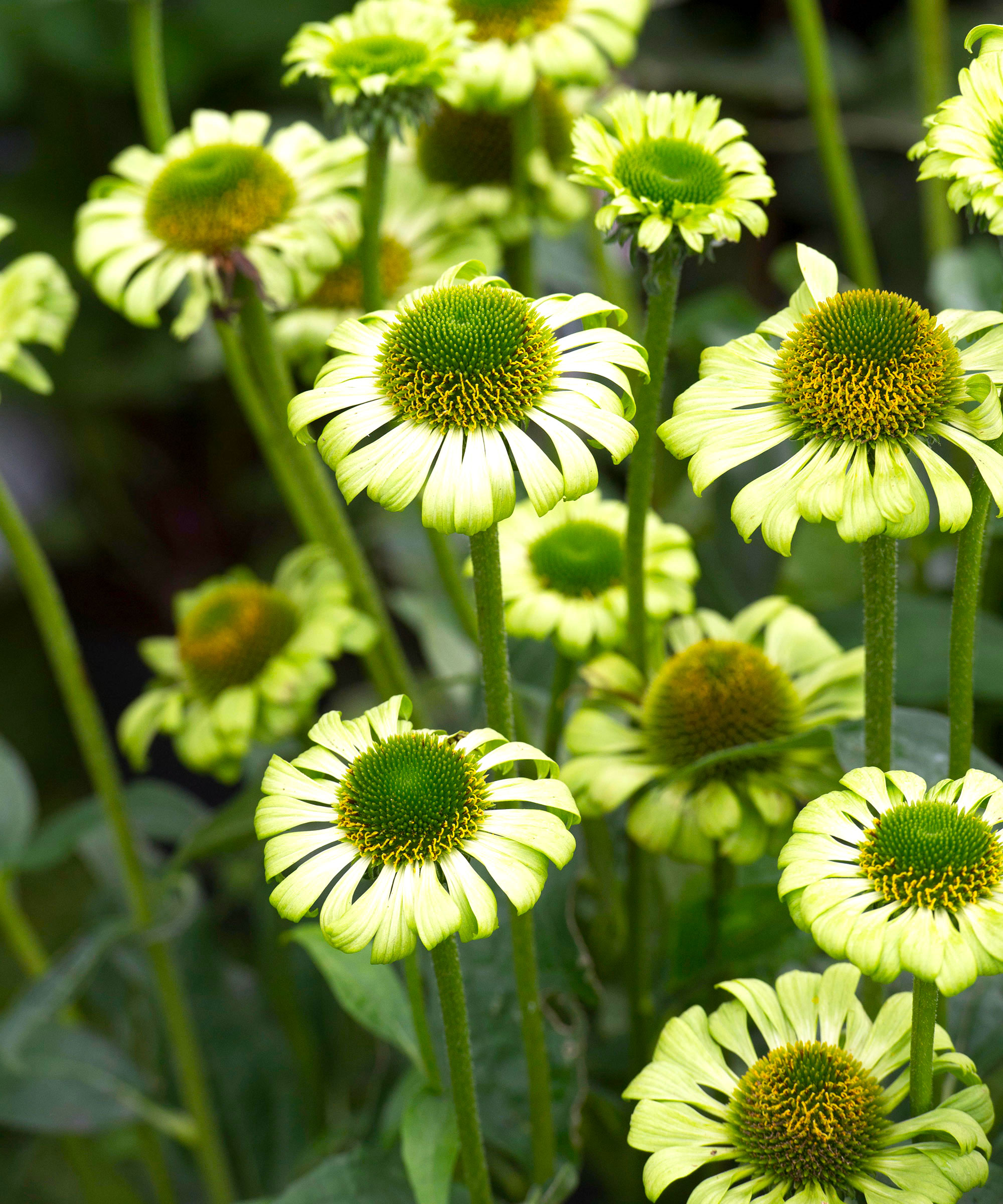
Deadhead coneflowers regularly will encourage more to form, but leave the seed heads in situ in fall for the birds to enjoy, as well as providing sculptural definition to your borders in winter.
You can cut back echinacea fully in spring when the new foliage emerges. Generally echinacea are disease and pest free.
If you are growing coneflower in large clumps, you should think about dividing up your plants in spring. They won't necessarily enjoy it but it's a good thing to do to create more for planting in the loose and naturalistic drifts that are so fashionable at the moment.
Take care when you start the division process, and use a knife to help separate portions of plant if necessary. Like most herbaceous perennials, echinacea should propagate well from basal cuttings taken off new spring growth. Make them 4-5in (10-13cm) long and cover with ventilated polythene out of full sun to root.
For more advice, our guide on how to take plant cuttings has lots of tips to get you started with plant propagation.
FAQs
Do coneflower make good cut flowers?
Coneflowers are a great option if you're looking for the best cutting garden flowers. They look great styled as single blooms in individual vases or as part of a softer, natural arrangement with cosmos, veronica and summer foliage from the garden. They are also one of the longest lasting cut flowers, and stay looking good for up to three weeks if you change the water regularly.
To get the best results, gather flowers first thing in the morning when they are freshest. Cut the long sturdy stems as near to the ground as possible to encourage more blooms to come along. Remove any leaves lower down the stems and recut them at a sharp angle to help keep the flowers fully hydrated.
Native Americans have used echinacea for centuries to treat various ailments. Today, it’s best known as an over-the-counter herbal remedy for the common cold or flu. However, it’s also used to treat pain, inflammation, migraines and other health issues. Both the plant’s upper parts and roots are used in tablets, tinctures, extracts and herbal teas. If you're interested, there are lots of other ideas for how to grow your own herbal tea.







